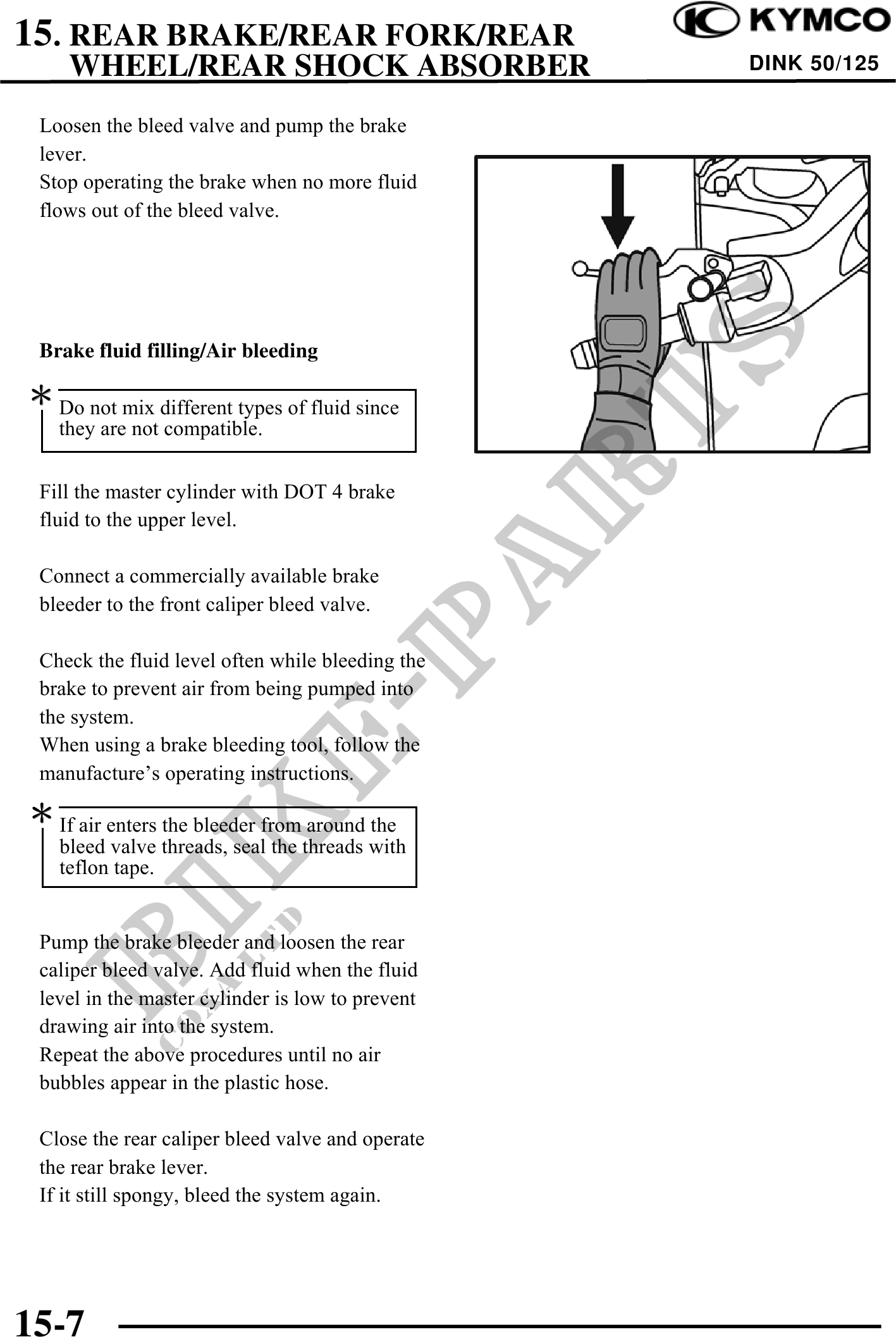Winkelwagen


| Produkt | Onderdeelnummer | Aantal |
|---|

15. REAR BRAKE/REAR FORK/REAR
WHEEL/REAR SHOCK ABSORBER DINK 50/125
Loosen the bleed valve and pump the brake
lever.
Stop operating the brake when no more fluid
flows out of the bleed valve.
Brake fluid filling/Air bleeding
Do not mix different types of fluid since
they are not compatible.
Fill the master cylinder with DOT 4 brake
fluid to the upper level.
Connect a commercially available brake
bleeder to the front caliper bleed valve.
Check the fluid level often while bleeding the
brake to prevent air from being pumped into
the system.
When using a brake bleeding tool, follow the
manufacture's operating instructions.
If air enters the bleeder from around the
bleed valve threads, seal the threads with
teflon tape.
Pump the brake bleeder and loosen the rear
caliper bleed valve. Add fluid when the fluid
level in the master cylinder is low to prevent
drawing air into the system.
Repeat the above procedures until no air
bubbles appear in the plastic hose.
Close the rear caliper bleed valve and operate
the rear brake lever.
If it still spongy, bleed the system again.
15-7